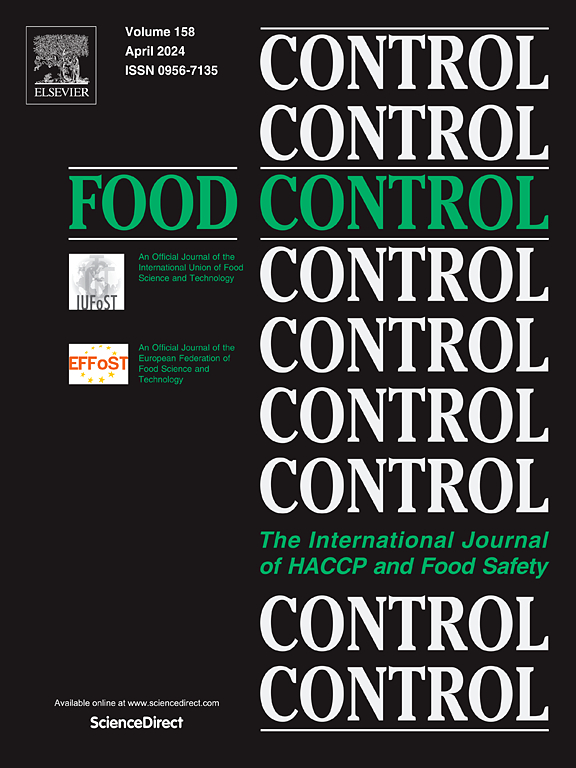Economic evidence for the control of Salmonella in animal-derived food systems: A scoping review
IF 5.6
1区 农林科学
Q1 FOOD SCIENCE & TECHNOLOGY
引用次数: 0
Abstract
Salmonella is estimated to be annually responsible for 95.1 million cases of human gastrointestinal disease and 155,000 deaths worldwide. Infection is mostly foodborne. Salmonella is costly to healthcare, human/animal wellbeing and animal production. This paper was written by members of RIBMINS, a Europe-wide network of food safety researchers, with the aim to review the existing economic evidence on interventions to curb Salmonella spread in animal-derived food systems. Despite the widespread implementation of national control plans our search yielded only 35 primary sources of data over the span of 40 years and multiple value chains. Cost-benefit analyses were the most frequent type of study. There was little consistency between the variables included in these analyses thus hindering potential comparisons. Much of the identified literature was focused on interventions at the farm level (n = 24) either exclusively or associated with further interventions in the value chain such as at harvest and/or feed production. From the data, it became apparent that most of the costs are borne by the private sector which is not surprising given the potential for outbreaks to damage reputation and profitability. On the other hand, the most benefit is accrued by the public sector through decreased health costs and improved workforce productivity. We argue that to be able to make evidence-based decisions on which Salmonella control interventions to adopt and where the cost of these should fall, standardised economic analysis should be undertaken in the food safety space.
控制动物源性食品系统中沙门氏菌的经济证据:范围综述
据估计,沙门氏菌每年导致全球 9510 万例人类胃肠道疾病和 15.5 万人死亡。感染主要通过食物传播。沙门氏菌对医疗保健、人类/动物健康和畜牧业造成了巨大损失。本文由欧洲食品安全研究人员网络 RIBMINS 的成员撰写,旨在回顾现有的经济证据,探讨如何采取干预措施遏制沙门氏菌在动物源性食品系统中的传播。尽管国家控制计划得到了广泛实施,但我们在 40 年间和多个价值链中仅搜索到 35 个原始数据来源。成本效益分析是最常见的研究类型。这些分析所包含的变量之间几乎没有一致性,因此阻碍了潜在的比较。大部分已确定的文献都侧重于农场层面的干预措施(n = 24),或者是专门的干预措施,或者是与价值链中的进一步干预措施相关联的干预措施,如收获和/或饲料生产。从数据中可以明显看出,大部分成本由私营部门承担,这并不奇怪,因为疫情爆发有可能损害声誉和盈利能力。另一方面,公共部门通过降低医疗成本和提高劳动力生产率获得了最大收益。我们认为,为了能够就采取哪些沙门氏菌控制干预措施以及这些干预措施的成本应该由谁来承担做出循证决策,应该在食品安全领域开展标准化的经济分析。
本文章由计算机程序翻译,如有差异,请以英文原文为准。
求助全文
约1分钟内获得全文
求助全文
来源期刊

Food Control
工程技术-食品科技
CiteScore
12.20
自引率
6.70%
发文量
758
审稿时长
33 days
期刊介绍:
Food Control is an international journal that provides essential information for those involved in food safety and process control.
Food Control covers the below areas that relate to food process control or to food safety of human foods:
• Microbial food safety and antimicrobial systems
• Mycotoxins
• Hazard analysis, HACCP and food safety objectives
• Risk assessment, including microbial and chemical hazards
• Quality assurance
• Good manufacturing practices
• Food process systems design and control
• Food Packaging technology and materials in contact with foods
• Rapid methods of analysis and detection, including sensor technology
• Codes of practice, legislation and international harmonization
• Consumer issues
• Education, training and research needs.
The scope of Food Control is comprehensive and includes original research papers, authoritative reviews, short communications, comment articles that report on new developments in food control, and position papers.
 求助内容:
求助内容: 应助结果提醒方式:
应助结果提醒方式:


